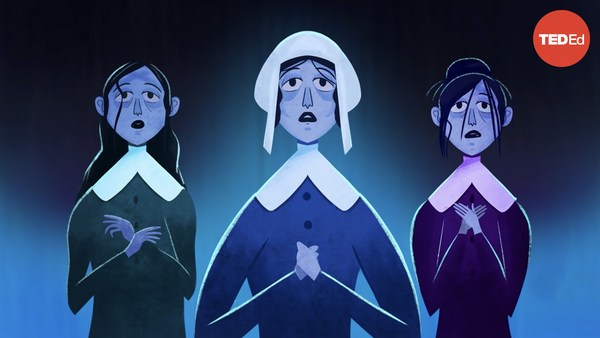For almost two millennia, the Pope has been a figure of supreme spiritual authority for Catholics around the world. But in the late 14th century, Catholics found themselves with not one, not two, but three popes. Where did this plethora of popes come from? And who among them was the genuine article?
The origins of this papal predicament began in 1296, when France’s King Philip IV decided to raise taxes on the Church. Given the clergy’s political power, this offended Pope Boniface VIII, leading him to write the “Unam Sanctam”: a radical decree asserting the Pope’s total supremacy over earthly rulers. But King Philip struck back. He declared Boniface a heretic and tried to have him arrested in a violent raid. Boniface survived the assault, but died soon after. And following a short-lived successor, Pope Clement V was elected in 1305. A French diplomat seeking peace in the war between England and his homeland, Clement wanted to stay close to the conflict and escape the demands of Rome. So in 1309, he moved the seat of the papacy to Avignon— a city close to France but owned by a vassal of the Church.
The papacy remained here for the terms of seven popes until the reigning Pope finally returned to Italy in 1376. But just several months after his arrival, he suddenly died. This shocking development meant a new pope had to be elected immediately— and in Rome, where there hadn’t been a papal election in over 70 years. The Romans were determined to elect one of their own and restore Rome as the seat of Western Christendom. Local officials pressured cardinals to choose an Italian pope, while rowdy mobs raided the conclave and plundered the papal wine cellar. Amidst this chaos, the cardinals elected the Neapolitan Archbishop of Bari to become Pope Urban VI.
Initially, Urban was seen as a safe choice. But he quickly proved to be a reformer who sought to limit the cardinal’s finances. Desperate to maintain their luxurious lifestyles, the cardinals declared the recent election illegitimate, since it was decided under pressure from the Roman mob. They denounced Urban as a usurper and held a new conclave to elect Pope Clement VII. Clement attempted to excommunicate Urban, but he refused to recognize the authority of Clement or his greedy cardinals. Urban named new cardinals to his court and entrenched himself in Rome while Clement and his supporters returned to Avignon. The schism had officially begun.
Western Christendom now had two capitals, Avignon and Rome, each with their own Pope and court of cardinals. As popes from each line died, their cardinals appointed successors, continuing the crisis for decades. This strange situation didn't impact most ordinary Catholics, as there were no significant doctrinal splits. Instead, the drama played out in the diplomatic realm. European rulers were forced to choose sides, as both popes vied for spiritual and political supremacy.
Only a pope had the authority to call a general council to officially resolve the issue, and both sides refused to take this step. So in 1409, a group of cardinals from France and Rome took matters into their own hands. They claimed that since both popes were disputed, cardinals did have the right to call a council. And at their gathering these cardinals deposed the pretenders and elected a new Pope. Unfortunately, both Avignon’s Pope and Rome’s Pope refused to recognize this council. So instead of solving the crisis, the number of popes rose to three.
This unusual arrangement lasted five more years, until the Council of Constance in 1417. Here, the popes from the Roman line and recently created third line resigned and agreed to unite the church under a new Pope— Martin V. Undisputed, Martin swiftly excommunicated the only person still against him— the Pope of Avignon— and finally ended the schism after 39 years.
Today, the church’s official records say the Roman Line was always the true papal power. But regardless of how the schism ended, its existence proves that even those who are supposed to be pious are prone to petty power struggles.


